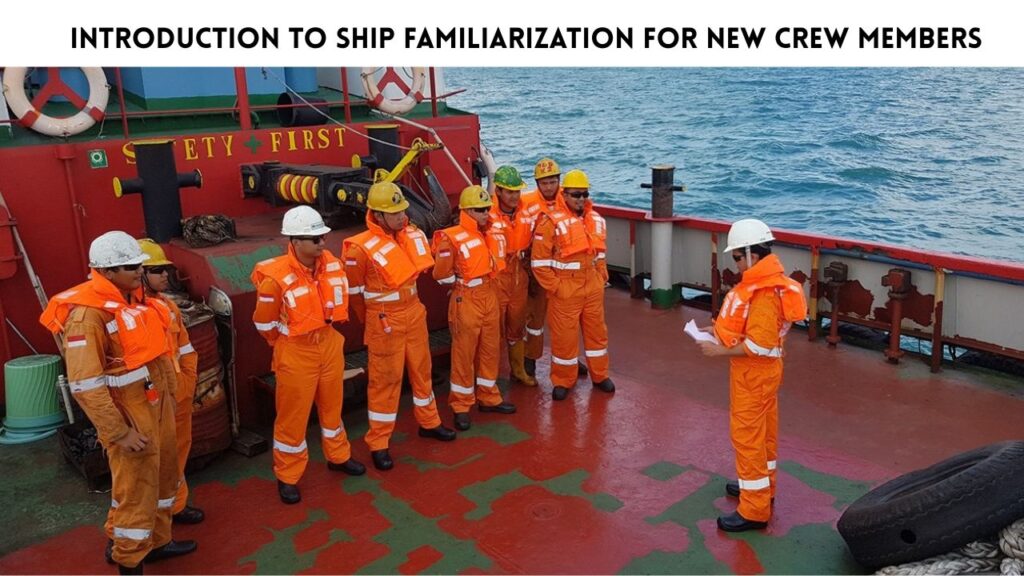Introduction to Ship Familiarization for New Crew Members
Table of Contents
Apply Now

Ship familiarization training in the Merchant Navy is a crucial first step for any new crew member. It ensures individuals are fully acquainted with the vessel’s layout, systems, equipment, and emergency procedures. This foundational knowledge is not only essential for operational efficiency but also critical for onboard safety. For candidates preparing through IMUCET coaching in Haryana, understanding this aspect is key to succeeding in both exams and future maritime careers.
What is Ship Familiarization?
Ship familiarization introduces crew members to the basic functions and layout of a vessel. It involves structured orientation through a ship training program that covers general and department-specific tasks. Whether on cargo vessels, tankers, or passenger ships, familiarization ensures crew can navigate, communicate, and respond effectively on board.
Key Aspects of Ship Familiarization
Understanding the Ship’s Layout
New crew are trained to recognize critical areas like the bridge, engine room, crew quarters, and cargo spaces. This is vital for both operational roles and emergency responses.Emergency Procedures
A strong focus is placed on emergency equipment training, safety drills, escape routes, and alarm signals to help the crew handle fires, man overboard, and other incidents.Daily Routines and Duties
Through deck department familiarization and engine department training, new recruits learn about daily duties, PPE usage, and shipboard discipline.Safety Policies and Regulations
Topics include STCW ship familiarization, human resource policies, risk assessments, and safety codes to ensure compliance with IMO training requirements.Communication and Teamwork
Effective communication, especially during crises, is emphasized through communication systems familiarization and teamwork exercises.Specialized Ship Knowledge
Training may vary based on vessel type. For example, cargo handling training and passenger management procedures are included in vessel familiarization courses.
Training Methods and Formats
To ensure well-rounded learning, various formats are used:
Onboard Ship Training: Real-life scenarios and hands-on tasks.
Simulator Ship Familiarization: Risk-free environment to practice navigation and safety drills.
Classroom Maritime Training: Theoretical understanding of ship systems and safety.
Practical Ship Familiarization: Walkthroughs of ship compartments and machinery.
Online Ship Training Modules: Flexible learning, especially useful for IMUCET aspirants in Haryana.
Standards and Certification
New seafarers must complete recognized maritime familiarization courses. These include:
STCW Safety Familiarization
Certificate of Ship Familiarization
Passenger Ship Familiarization (Crowd Management)
IMO-Compliant Maritime Training Standards
Completing these ensures competency for ship familiarization and global acceptance of skills.
Benefits of Ship Familiarization Training
Enhanced Safety: Familiar crew respond better during emergencies.
Operational Efficiency: Knowing one’s duties leads to smoother ship operations.
Fewer Accidents: Reduces risks caused by confusion or unfamiliarity.
Boosted Morale: Confidence grows when crew know their environment and role.
Career Relevance and Coaching Support
At our IMUCET coaching center in Haryana, we offer dedicated sessions on ship familiarization training, covering:
New Crew Onboard Training
Marine Officer Training Basics
Ship Crew Orientation Programs
Mock drills, real-time simulations, and concept-based learning
Training aligned with maritime safety certification standards
Final Thoughts
Ship familiarization in the Merchant Navy is more than just a basic course—it’s a survival toolkit. It equips new crew members with the confidence, awareness, and readiness needed for a successful maritime career. At our coaching institute in Haryana, we ensure aspirants are not only IMUCET-ready but also career-ready through focused modules on ship familiarization training and maritime safety.
